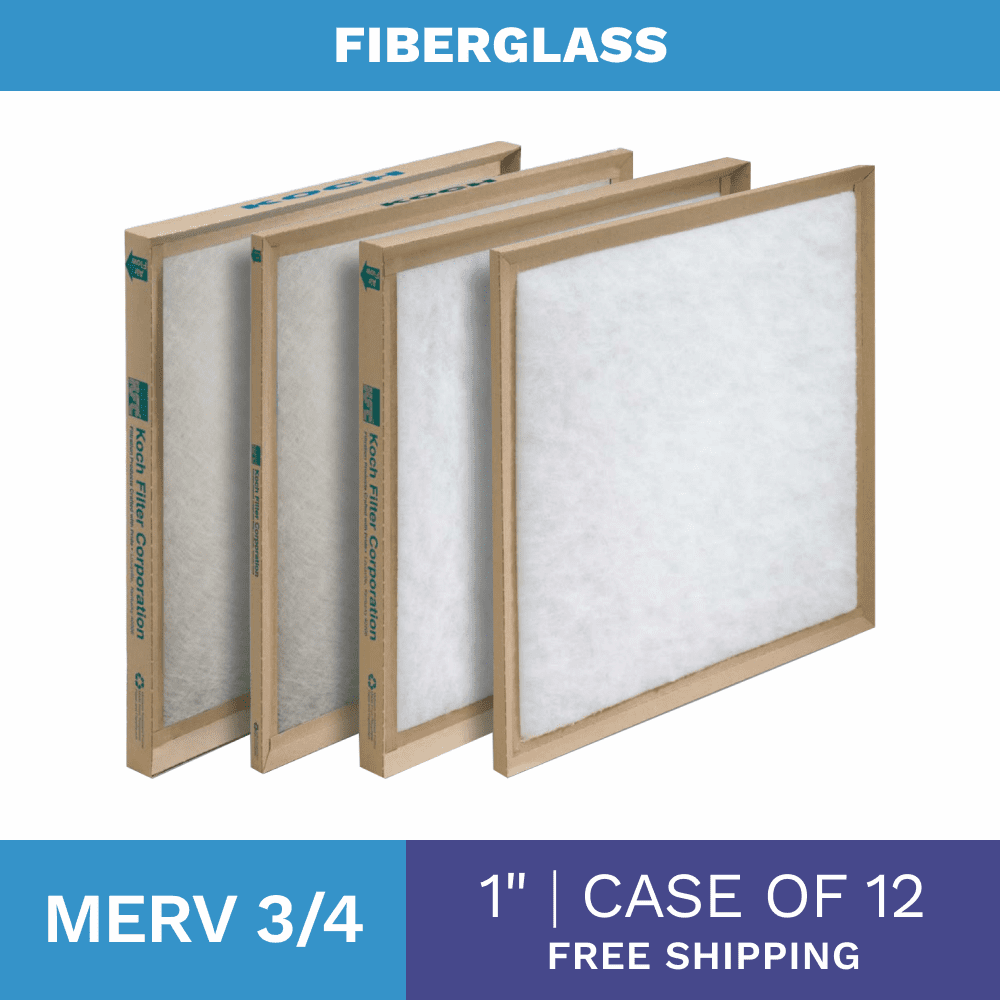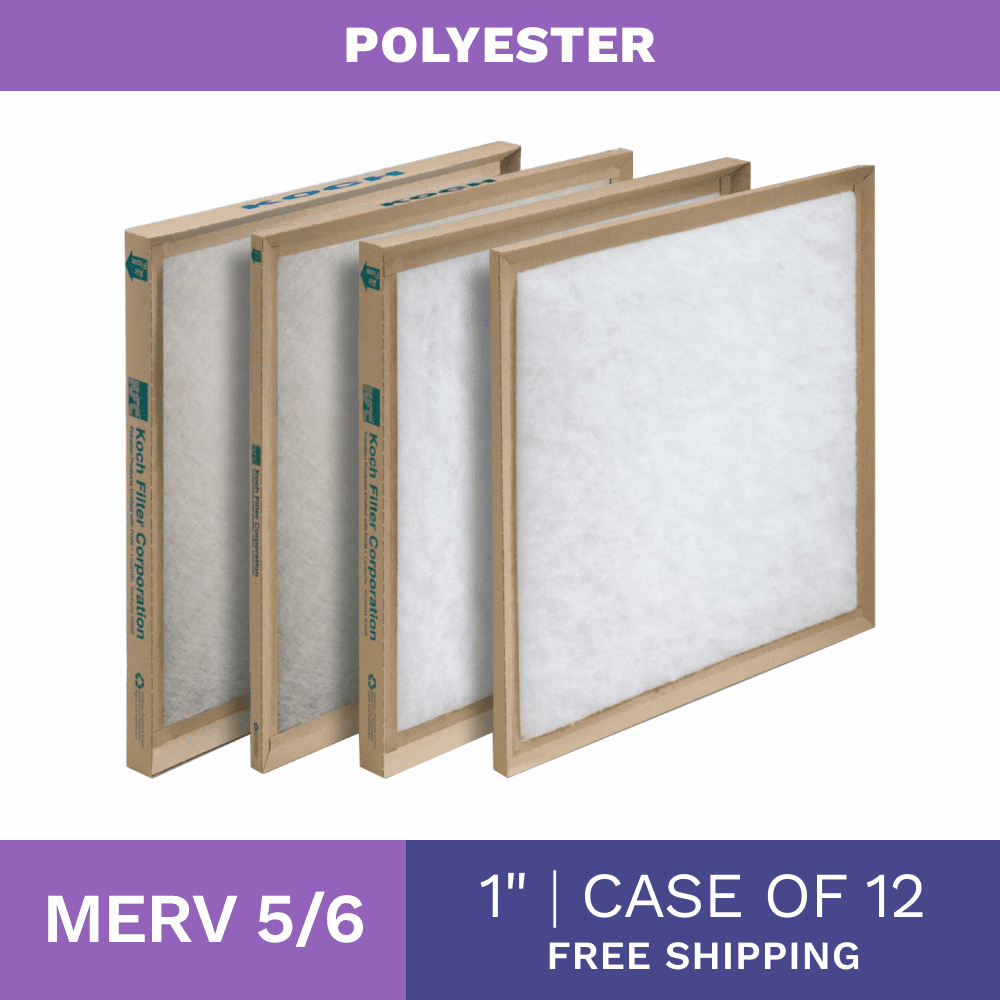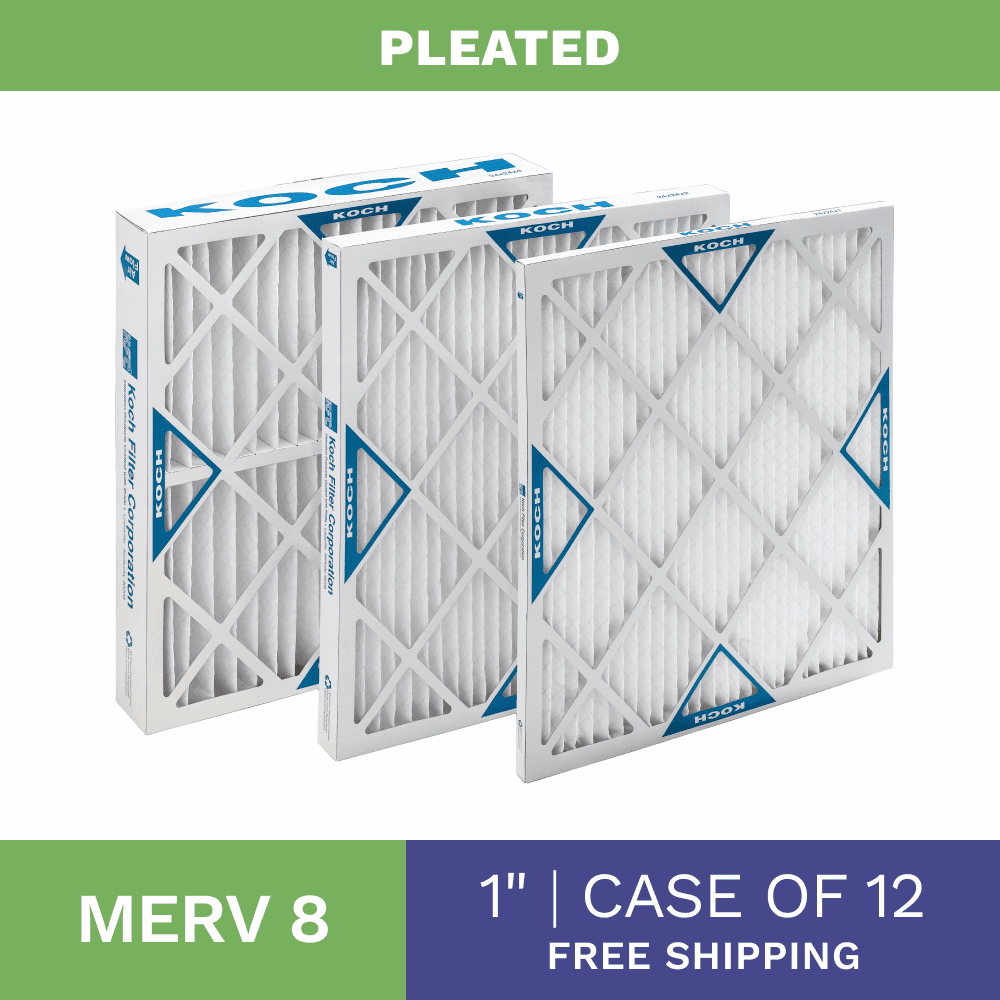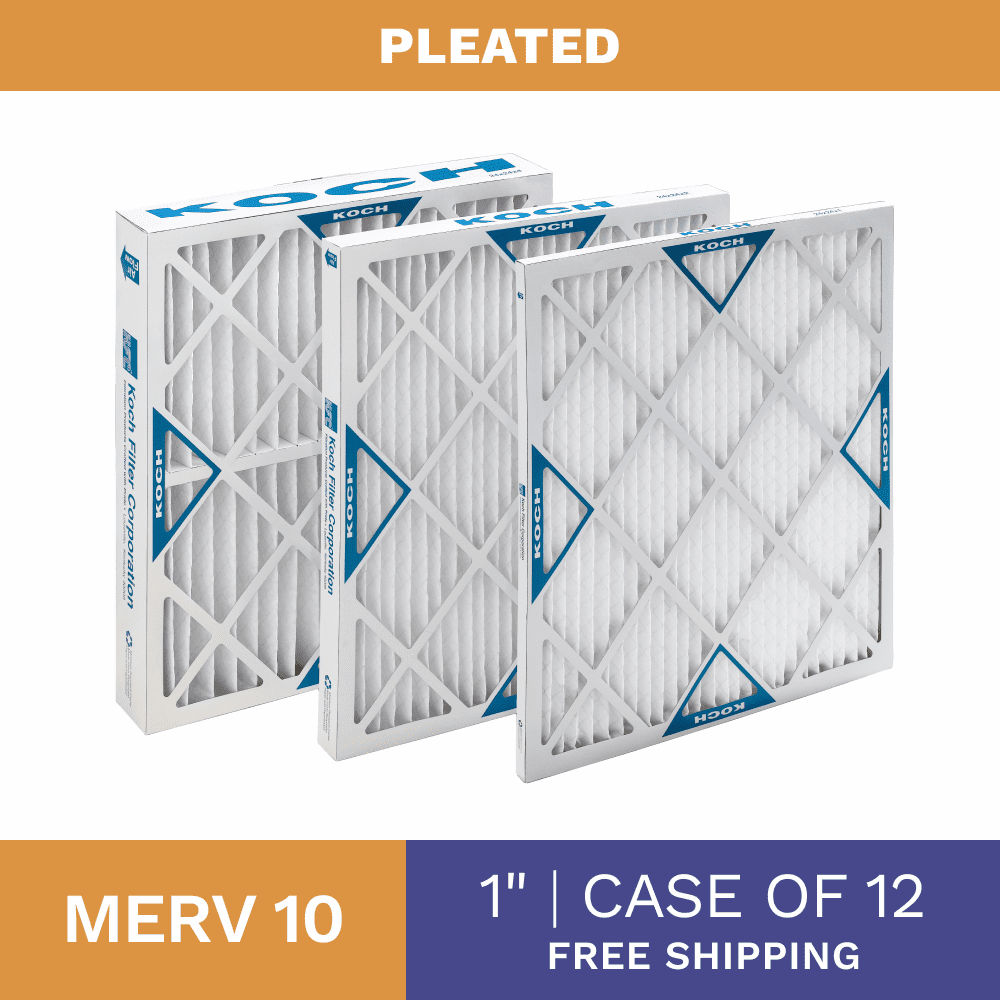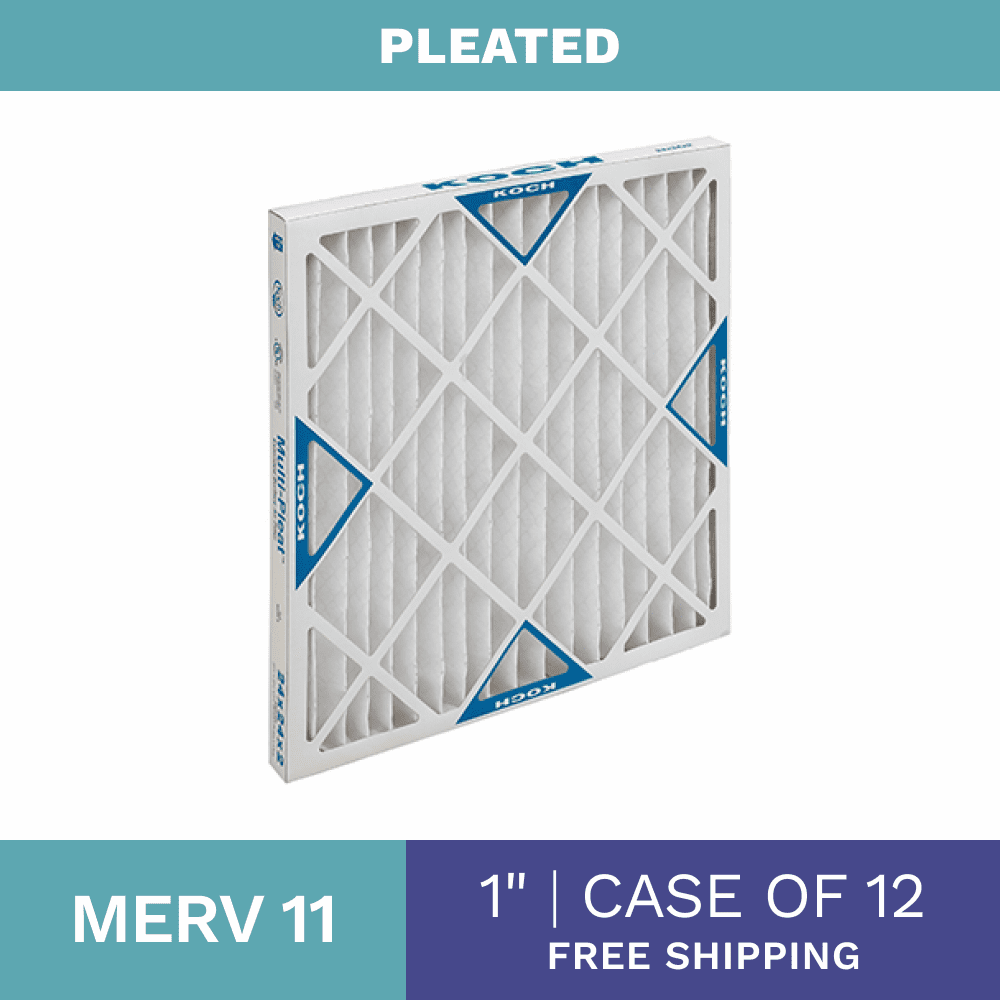
Have you ever glanced at the return vents in your walls or ceilings and wondered if they need air filters? It's a common question, especially for homeowners dealing with dust, allergies, or pet hair. Should you add filters to your return vents, or is your main HVAC filter enough? Let's break it down and find out.
Use the shortcuts below to quickly navigate to a part of the article.
What Filters Should I Use for Air Return In My Room?
Do I Need Both a Furnace Filter and a Return Air Grill Filter?
When You Need a Return Vent Filter
When the Return Vent Doesn't Need a Filter
Some Additional Things To Note About HVAC Air Filters
Ultimately, Should You Install Filters In Your Return Vents?
What Filters Should I Use for Air Return In My Room?
If you will need to use a filter, the kind of filter utilized for the return vent will depend upon particular requirements, such as if it is important to capture dust, animal dander, or allergens. A brief overview is provided below.
Fiberglass Filters (MERV 1-4)
These basic filters trap large particles like dust and lint. They're great if you want to prioritize airflow over heavy-duty filtration.
Pleated Filters (MERV 8-12)
These offer improved performance. They can trap tiny pieces such as pollen, mold spores as well as animal fur. This represents a solid choice if you suffer from allergies or own animals.
HEPA Filters (MERV 13+)
These filters trap the tiniest particles, including bacteria and viruses. However, not all systems can handle the restricted airflow caused by HEPA filters.
Thinking about specific areas of application in the home, a pleated filter with a MERV rating from 8 and 10 is a great choice for room air purifiers like bedrooms or living spaces. It balances good filtration with proper airflow. If you're looking for high-quality MERV filters, check out our MERV 8 Filters and MERV 10 Filters for cleaner indoor air.

Do I Need Both a Furnace Filter and a Return Air Grill Filter?
First, let's know what furnace filters and return air grill filters are, what they do, and why they are important. We will then examine the question of whether you need one or both of them and the pros and cons to consider before making your choice.
What Is a Furnace Filter?
The furnace filter is the primary filter in your HVAC system. It's typically located at or near the air handler or furnace, where air gets pulled into the system for heating or cooling.
What does a furnace filter do?
- Protects Your System:
Your furnace filter is there to keep all the gunk out—dust, dirt, you name it. It stops that stuff from messing with the important bits like the blower motor and coils. If you skip the filter, your HVAC could get all clogged up, run terribly, or even just quit on you. - Improves Air Quality:
Essentially, this system keeps things comfy temperature-wise while also cleaning up the air by grabbing dust, pollen, and pet hair before sending it back out.
Why it's Important to install one:
- Your furnace filters keep your HVAC system running smoothly and the air in your place nice and clean. Basically, these filters deal with a ton of air flowing through your home, catching all sorts of stuff before it circulates.

What Is a Return Air Grill Filter?
The return air grill filter is an additional filter placed directly at the return vents—the points where the air gets sucked back into the HVAC system.
What does a return air grill filter do?
- Keeps Ducts Cleaner:
Return grill filter trap. They debris, pet hair, and larger particles before they enter the ductwork; return grill filters can help reduce buildup in the ducts and keep them cleaner over time. - Acts as a Pre-Filter:
The pre-filters capture the larger particles before they reach the main furnace or AC filter. This first step reduces the strain on the primary filter, potentially extending its lifespan.
Why a return air grill filter is optional
This can be for two reasons:
- Return grill filters can be helpful, but they aren't needed in every situation. If your furnace filter is high-quality and regularly maintained, it usually provides sufficient filtration for the entire system.
- If you use filters in your return vents, opt for low-MERV filters to prevent unnecessary strain on your system.


Shop Filters By Type, Size & Brand
When You Need a Return Vent Filter
You want to consider adding filters to your return vents when any of the following apply to you:
1. You have pets
- Why It Helps:
Animals lose hair and skin cells. These can build up inside your heating, ventilation, along air conditioning system and its ductwork as time passes. Filters placed at the return vents capture this material before it goes into the system. This keeps the ducts in a cleaner state and lowers the load on your furnace filter. - What to Use:
Opt for a low-MERV filter (MERV 4-6) in the return vent. These filters capture larger particles, such as hair, without significantly restricting airflow.
2. You Want to Keep Your Ductwork Clean
- Why It Helps:
Return vent filters work as the first step of protection. They trap particles such as dust, dirt, in addition to various debris. The goal is to stop these things from settling inside your ductwork. With cleaner ducts, there will be better airflow, a more effective system as well as maybe duct cleaning that does not need to happen as often. - Cost Savings:
Using return vent filters? Smart move! You'll likely save some cash down the line since you won't need duct cleaning as often.
3. You're in a Dusty Environment
- Why It Helps:
If your home is located near construction sites, busy roads, or other sources of outdoor dust, return vent filters can help trap additional debris that might otherwise clog your HVAC system. - Improved Indoor Air Quality:
Return vent filters help maintain cleaner air throughout your home, especially in high-traffic areas, by catching dust early.
When the Return Vent Doesn't Need a Filter
In some cases, adding filters to your return vents could cause more problems than it solves. Here are the scenarios where you might want to skip them:
1. Your HVAC System Struggles with Airflow
- Why It Matters:
Adding filters to return vents increases airflow resistance. If your system is already struggling due to undersized ducts, an older HVAC unit, or existing high-MERV filters, additional resistance could make it work harder, reducing efficiency and higher energy bills. - The Impact:
Overloading your system can result in uneven heating or cooling, increased wear and tear, and potentially even breakdowns.
2. You Can't Commit to Regular Maintenance
- Why It Matters:
Return vent filters, like furnace filters, require regular cleaning or replacement. If they become clogged and aren't changed on time, they can unnecessarily restrict airflow and strain your HVAC system. - Pro Tip:
If you're unsure you can keep up with the maintenance, it's better to rely solely on a high-quality furnace filter to handle your home's filtration needs.
3. Your Furnace Filter Is Already Doing the Job
- Why It Matters:
Adequately maintained, a high-MERV furnace filter is often enough to handle your home's air quality needs. Adding return vent filters in this scenario might not offer significant benefits and could unnecessarily complicate maintenance.
Shop Filters By Type, Size & Brand
Some Additional Things To Note About HVAC Air Filters
Now that we've explained the factors that determine whether to use a return vent filter or not, it's time to discuss other important issues relating to filters. This includes handling systems with two filters, best locations for filters in the home, how to keep your filters at their best, and how to determine sizes and options for your return air vent filters.
Do all HVAC systems have two filters?
No. Most HVAC filter systems possess only a single filter. It is located at the air handler. This single filter keeps the system running without issue. It also keeps the circulating air relatively clean.
However, some systems might have two filters:
- Large homes or zoned systems may have return vent filters in addition to the furnace filter.
- If you or a previous homeowner installed return vent filters for extra filtration, you must maintain two filters.
Air handler filter location and purpose
You'll typically find your air handler or furnace filter right on the unit itself, often in the return duct near the blower motor or inside the furnace cabinet.
Basically, it does two main things:
- It keeps your HVAC system safe by catching dust and gunk before it can mess with the important parts.
- It cleans up the air in your house by getting rid of stuff like dust, pet hair, and allergens.
Think of it as the "heart" of your HVAC system—it keeps everything running smoothly and keeps the air filter for your home!
Return air vent filter sizes and options
Not all return vent filters are the same size, so you must measure your vents to find the right fit.
How to Measure
- Remove the old filter (if there is one).
- Find the vent opening's dimensions: length, width, and depth.
Standard Sizes
Common sizes include 16x20, 20x25, and 14x30. Custom-sized filters are available for unique setups.
Filter Options
Choose based on your needs:
- Fiberglass for elemental dust and lint.
- Pleated for better filtration of allergens and pet dander.
- HEPA filter for high-efficiency air cleaning (if your system can handle it).
How to Keep Filters Working Their Best
Here are suggestions on how to keep your filters working at their best
Check Monthly
Check your filter at least once a month to look for dust and debris and remove them.
Replace Regularly
- Return vent filters: Every 1-2 months, if you have pets or allergies, as two examples of why you need to change more often.
- Furnace and AC filters: Every 1-3 months
Watch for Airflow Issues
If the airflow feels weak, it could mean your filters are clogged up.
Ensure fit and secure installations
Ensure the filters that you install fit snugly in their frames to avoid airflow leaks. This is important during your first installation and as a routine maintenance check.
Ultimately, Should You Install Filters In Your Return Vents?
Honestly, it really depends on your specific situation. Most homes do fine with just a standard furnace filter. However, if you've got furry friends, allergies acting up, or a dusty ductwork situation, adding return vent filters is a smart move for that extra bit of filtration. Just remember to keep them clean!
Still unsure if return vent filters are right for your home? Contact AC Filters 4 Less today to find the best filters for your HVAC system.
Looking for top-notch filters that won't break the bank? We've got you covered! Let us help you pick the right MERV rating so you can breathe easier and keep your system humming.
Frequently Asked Questions
Do you need filters in return vents?
Usually, a high-quality furnace filter is enough for most homes. However, if you have pets or someone with an allergy in your home, you might consider installing one. Even at that, ensure you can commit to regular maintenance before installing a filter on your return vent. In any case, if your HVAC system is struggling with air flow or if you already have an adequately maintained high-MERV filter, you won't need a return air vent filter at all.
When should you use filters in return vents?
Return vent filters help in dusty areas, mostly places with heavy vehicular movement or construction areas, and in homes with pets. These filters are installed in homes with pets. You can also use vent filters to prevent particulate matter like dust, debris, and hair from entering your HVAC ductwork, thus extending its lifespan and increasing efficiency.
What's the potential downside of using filters in return vents?
They may restrict airflow and strain your HVAC system if not chosen wisely. You'll need regular checks and cleaning to prevent clogs or replacement. Also, if there is restricted airflow due to multiple filters, it can lead to the overheating of the HVAC components and this could potentially cause damage or premature failure of the system. Too many filters can create backpressure, strain the blower motor, and reduce the lifespan of your HVAC.
What is the best filter type?
Use low-MERV (4-6) filters in return vents to avoid overloading your system. These filters are very effective for maintaining good airflow. They can remove larger particles found in most homes, like dust, lint, and pollen. Apart from enabling good air flow, they are also cost-effective and effective for most standard air quality needs.
How to install a filter in the return vent
First, you'll have to turn off your HVAC system to prevent dust and debris from blowing into the system during the installation. Then locate the air vent return either on the walls, floors, or ceilings. Access the filter by opening the cover. This can be done by releasing some latches or clips or by loosening one or more screws. Remove the old filter, and handle it carefully because of dust and debris.
Identify the air flow direction marked on the filter and insert the filter, facing the arrow towards the ductwork. Make sure everything fits tightly and securely. Close the vent cover and fasten it securely, then turn your HVAC system back on. Ensure you mark the installation date to remember when it's due for replacement.
How Do I Keep My Return Vents Clean?
Keeping your vents clean will require regular replacements as specified by your HVAC system manufacturer. You can also remove vent covers and soak them in warm, soapy water before rinsing and drying them, and then install them once completely dried. You can also use a vacuum with a brush attachment to remove dust and debris. Lastly, the cleaner the home, the cleaner the vent. Regularly dusting and vacuuming your home can reduce the accumulation of dust and debris in your vents.
### About the Author
William Konves, an experienced HVAC filtration pro, has helped tons of homeowners pick the right air filters. He's learned from the best HVAC suppliers and experts and really knows his stuff when it comes to air filtration, MERV ratings, and making sure HVAC systems run efficiently. Basically, he makes sure homeowners get the best air quality solutions without messing up their systems.



